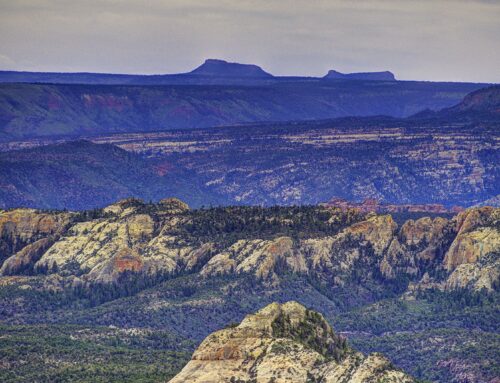Deb Haaland
U.S. Secretary of the Interior
1849 C Street, N.W.
Washington DC 20240
Re: The Collaborative Resource Management Plan for the Bears Ears National Monument
Dear Madam Secretary Deb Haaland,
We write to you as Tribal leaders in support of the Bears Ears Commission and their role in the co-management of the Bears Ears National Monument. We stand with the five Tribes of the Bears Ears Commission—The Hopi Tribe, Navajo Nation, Ute Mountain Ute Tribe, Zuni Tribe, and the Ute Indian Tribe of the Uintah and Ouray Reservation–and their sovereign authority to self-determine their preferred plan for management of the Bears Ears National Monument.
A Tribally-informed, collaborative Resource Management Plan for Bears Ears establishes a new standard of collaborative and sustainable management of public lands that formally adopts Tribal governance and Traditional Indigenous Knowledge (TIK) as part of the permanent framework for land and resource management in consideration of future generations. Including the time-tested knowledge of those nations ensures that the oldest management approaches continue to benefit the Monument well into the future.
The years of tireless work and collaboration between the Bears Ears Commission, Bureau of Land Management (BLM), and the U.S. Forest Service (USFS), which culminated in this plan, represent a pivotal shift in federal-Tribal co-stewardship that is long overdue. As the first national monument proposed by a coalition of Tribal Nations, Bears Ears is unprecedented —and the plan for managing its lands and resources must reflect that Tribal role to an equal degree.
We urge you to leverage your leadership and support the sovereign rights of the Bears Ears Commission Tribes and the key contributions they’ve made to the management of Bears Ears National Monument in this plan. A few of these contributions include a Tribally authored NEPA alternative based on TIK which reflects a more holistic approach to managing ancestral homelands, concrete management actions like monitoring and adaptive management to ensure that future decisions regarding the health of our regional landscapes and sacred places are informed by traditional and western scientific data, and increased understanding and models on how TIK can be incorporated into other models of management more broadly.
As you know, public lands intersect with and are adjacent to Tribal ancestral homelands across the West. Ensuring that Tribal perspectives are meaningfully involved in the protection and management of these lands is a way to respect Tribal Nations, prioritize sustainability for future generations, and move one step closer toward repairing historical injustices.
Sincerely,
| Bears Ears Commission Tribes | ||
| Timothy Nuvangyaoma Chairman Hopi Tribe |
Buu Nygren President Navajo Nation |
Julius T. Murray, III Business Committee Chairman Ute Indian Tribe |
| Manuel Heart Chairman Ute Mountain Ute Tribe |
Arden Kucate Governor Zuni Tribe |
|
| Supporting Tribes
|
|
| Mary J. Norris Chairwoman, Cahto Tribe of Laytonville Rancheria |
Anthony Ortiz Governor, Pueblo of San Felipe |
|
Deanne Cheshire |
Milton Herrera |
|
Reggie Wassana |
E. Michael Silvas |
|
Michael Dolson |
Delbert Pino |
|
Gary Burke |
Debra Ramirez |
|
Jonathan W. Smith |
Fawn C. Murphy |
|
Violet Sage Walker |
Johnny Lehi Jr. |
|
Ron Allen |
Shawn Davis |
|
Hope Silvas |
Gerald Lewis |
|
Christopher A. Moquino |
Joe James |
|
Bruce Bernstein |
|


